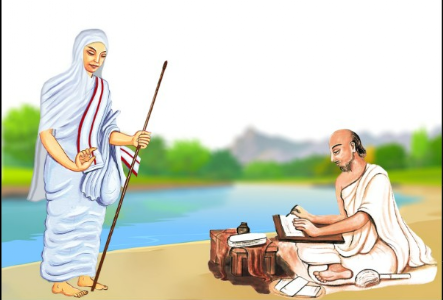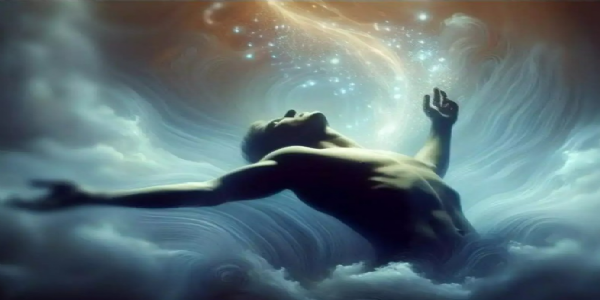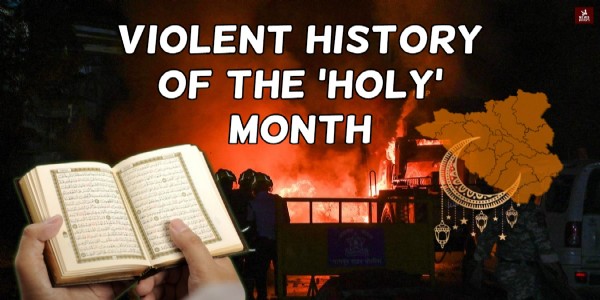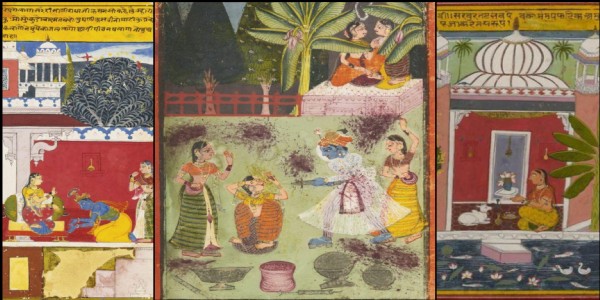Divine Ganga in Indian Civilization: A River Beyond Geography
The reverence for the Ganga extends far beyond religious scriptures; its presence is intricately woven into Indian art, architecture, and classical literature. Many ancient Indian temples feature sculptures of the Ganga and Yamuna at their entrances, symbolizing their sanctity.
Total Views | 151
- Aniket Jagdale
The Mahakumbh has once again brought the Ganga River into the spotlight, sparking discussions from multiple perspectives. However, the significance of the Ganga is not a recent phenomenon—it has been deeply revered for centuries, proving its timeless relevance. More than just a river, the Ganga is an inseparable part of Indian culture, religion, and traditions. It is regarded not only as a life-giving water source but also as a symbol of purity, a pathway to spiritual liberation, and the divine giver of moksha.

The reverence for the Ganga extends far beyond religious scriptures; its presence is intricately woven into Indian art, architecture, and classical literature. Many ancient Indian temples feature sculptures of the Ganga and Yamuna at their entrances, symbolizing their sanctity. Temples in Khajuraho, Konark, and Ellora display exquisite carvings depicting these sacred rivers.
One of the most iconic representations of the Ganga’s descent is found in the ‘Gangavataran’ sculpture at Mahabalipuram. This masterpiece illustrates the legend of King Bhagirath’s penance, which led to Bhagwan Shiva capturing the mighty river in his locks before gently releasing it onto Earth. Similar artistic depictions of the Ganga can be seen in the Ajanta and Ellora caves, as well as in the Hoysala temples.
The river’s presence is just as profound in Sanskrit literature, spanning from the Vedas and epics to the Puranas and devotional hymns. In the Mahabharata, the Ganga is venerated as the mother of Bhishma. In the Ramayana, Bhagwan Rama fondly remembers the sacred river as he embarks on his exile. Texts like the Skanda Purana and Vishnu Purana describe the Ganga’s sanctity in great detail, while devotional hymns such as Ganga Ashtakam and Ganga Lahari poetically extol its divinity.
The Ganga is not merely a geographical entity; it embodies the very soul of India. Its unmatched significance in Indian sculpture, literature, and religious traditions underscores its eternal presence in the cultural and spiritual fabric of the nation.
The Ganga is India's largest and most significant river, often referred to as the cradle of Indian culture. Nearly 40% of the country’s population resides along its banks, highlighting its historical and cultural importance in shaping India over the centuries. The river finds mention in ancient Indian scriptures, including the Vedas, Puranas, Upanishads, Ramayana, and Mahabharata. Beyond literature, the Ganga holds a prominent place in Indian architecture, sculptures, and temple carvings.
1. Representation of Ganga in Temple Sculptures
(A) Depictions at Temple Entrances
1. Lakshman Temple (Sirpur, Chhattisgarh, 7th century) – The temple’s entrance showcases sculptures of Goddess Ganga and Yamuna, standing on their respective mounts: a crocodile (makara) for Ganga and a tortoise (kurma) for Yamuna.
2. Kandariya Mahadev Temple (Khajuraho, Madhya Pradesh, 10th century) – Similar depictions of Ganga and Yamuna can be seen at the temple entrance. Ganga holds a kalash, symbolizing purity.
3. The ‘Descent of the Ganga’ in Mahabalipuram (Tamil Nadu, 7th century)
One of India’s largest rock carvings, this exquisite sculpture depicts King Bhagirath’s penance, Shiva controlling the Ganga’s descent, and celestial beings, animals, sages, and other divine figures witnessing the event.
Also read: Faecal bacteria in Ganga? Lets do an absolute scientific FACTCHECK about the Sacred River
4. Ganga in Ajanta and Ellora Caves
(A) Kailasa Temple, Ellora (8th century)
The outer walls feature intricate carvings of Ganga, Yamuna, and Saraswati. Additionally, a sculpture of Shiva as ‘Gangadhar’ (bearer of the Ganga) is present.
(B) Ajanta Caves (2nd-6th century)
Buddhist monks considered the Ganga sacred for ritualistic bathing and meditation. Some murals depict people bathing in the river.
5. Odisha’s Temple Sculptures
(A) Konark Sun Temple (13th century)
The temple showcases carvings of the Triveni Sangam (confluence of Ganga, Yamuna, and Saraswati). Sculptures of Ganga and Yamuna adorn the temple pillars.
(B) Lingaraj Temple (Bhubaneswar, 11th century)
The temple’s upper sections feature intricate carvings representing the Ganga’s flow.
6. Representation in Jain Temples
(A) Dilwara Jain Temples (Rajasthan, 11th-13th century)
These temples house marble-carved depictions of Ganga and Yamuna, accompanied by a serpent and crocodile.
(B) Ranakpur Jain Temple (Rajasthan, 15th century)
The temple entrance features sculptures of the two river goddesses.
7. Hoysala Temples in Karnataka (12th century)
(A) Chennakesava Temple, Belur
Sculptures of Ganga’s flow and her crocodile mount are present. Carvings of Ganga and Yamuna are also found on the temple’s outer walls.
(B) Hoysaleswara Temple, Halebidu
Carvings on temple pillars depict various episodes of the Ganga’s mythology.
8. Influence of the Ganga in North Indian Architecture
(A) Temples in Varanasi
The Kashi Vishwanath temple complex features a shrine dedicated to ‘Gangeshwar Mahadev,’ associated with the sacred river. Many Varanasi temples have carvings depicting the Ganga’s flow.
(B) Gangotri Temple, Uttarakhand (18th century)
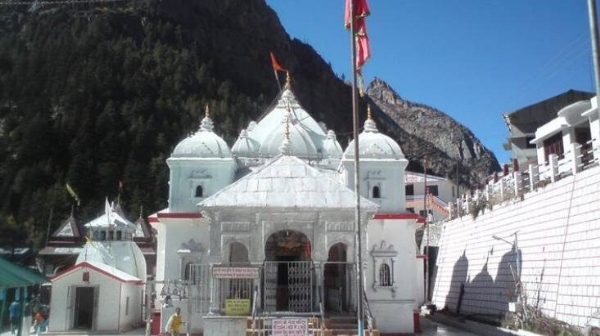
Dedicated to the Ganga’s origin, this temple houses an idol of Goddess Ganga.
The Ganga in Sanskrit Literature
The river is deeply revered in Indian spiritual texts, from the Vedas to epic poetry and hymns. Below are some key references:
1. The Ganga in the Vedas and Upanishads
(A) Rigveda
Though not extensively mentioned, Rigveda (10.75.5) classifies the Ganga among the seven sacred rivers (Sapta Sindhu).
(B) Atharvaveda (5.22.14)
The river is described as purifying and sin-cleansing:
"Pavitraṁ te nirmalaṁ toyaṁ Gaṅge! Sarvaṁ pāpaṁ vyapohati."
("O Ganga! Your waters are pure and sacred, washing away all sins.")
(C) Taittiriya Upanishad (10.64.2)
Mentions Ganga and Yamuna together as symbols of universal purity.
2. The Ganga in the Epics
(A) Ramayana
- The Ganga’s descent (Balakanda, Sarga 44-45) – Bhagirath’s intense penance brings Ganga to Earth through Shiva.
- Rama’s journey along the Ganga (Ayodhyakanda, Sarga 50-52) – During his exile, Rama first stays at the hermitage of Sage Bharadwaj near the Ganga before crossing it to reach Chitrakoot.
(B) Mahabharata
- The story of Shantanu and Ganga (Adi Parva, Chapters 94-95) – King Shantanu’s marriage to Ganga results in the birth of Bhishma.
- Ganga’s sacred waters (Anushasana Parva, Chapter 26) – Bathing in the Ganga grants salvation.
- The Ganga is also called ‘Bhagirathi’ in honor of King Bhagirath’s penance that brought it to Earth.
3. The Ganga in the Puranas
(A) Skanda Purana (Kashi Khanda, Chapter 35)
Refers to the Ganga as ‘Mokshadayini’ (the bestower of liberation):
"Gaṅgā sāgara saṅgame snānaṁ kṛtvā naro bhavet muktaḥ."
("One who bathes at the Ganga-Sagar confluence attains liberation.")
(B) Vishnu Purana (5.3.9-11)
Describes the Ganga as ‘Vishnupadi’ because it originates from Vishnu’s feet and sanctifies all three worlds.
(C) Bhagavata Purana (9.9.12-16)
Sings the Ganga’s praises, relating it to Krishna and Bhagirath’s devotion.
4. The Ganga in Sanskrit Poetry and Hymns
(A) Ganga Lahari (by poet Jagannath, 17th century)
A hymn extolling the river’s purity: "A single drop of your waters can absolve all sins."
(B) Kalidasa’s ‘Raghuvamsa’
Describes Bhagirath’s penance and the river’s divine descent.
(C) Advaita Vedanta and the Ganga
Adi Shankaracharya’s ‘Ganga Ashtakam’ glorifies the river as a path to salvation.
5. The Ganga in Dharma and Ethics
(A) Manusmriti (5.96-97)
States that bathing in the Ganga removes sins and liberates from the cycle of rebirth.
(B) Ayurveda and Yoga
Texts like Charaka Samhita and Sushruta Samhita highlight the medicinal and life-giving properties of Ganga water.
From temples and sculptures to literature and philosophy, the Ganga has influenced nearly every aspect of Indian civilization. It is not merely a river but a revered deity, a source of purity, salvation, and life itself. The Ganga’s deep-rooted presence in Indian culture underscores its unparalleled spiritual and historical significance.
(Originally published on Vayuveg in Marathi, translated by Himali Nalawade)
--
Bharati Web



